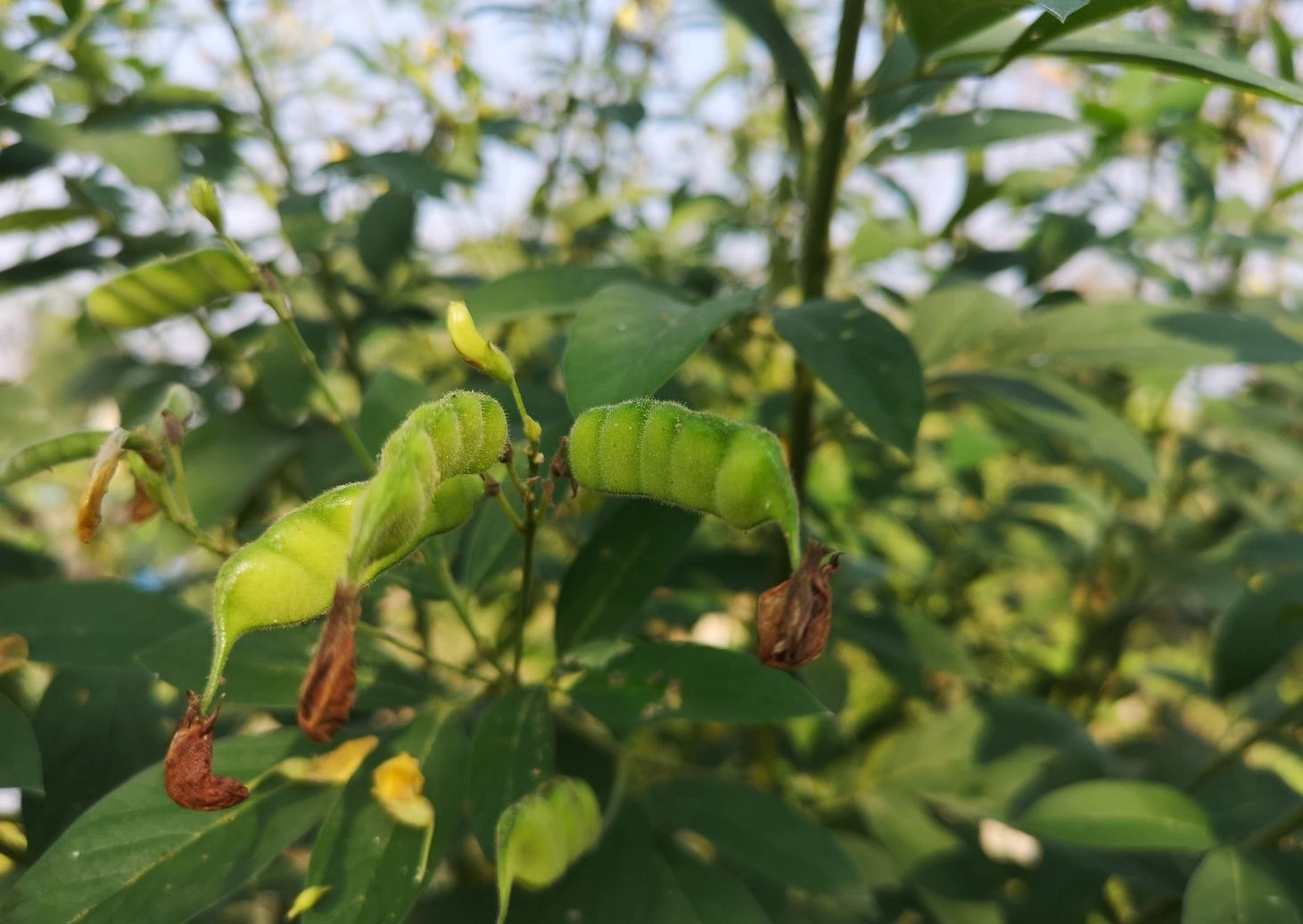Weed Management in Pigeon Pea Farming
Pigeon pea (Cajanus cajan) is also known as red gram or arhar dal. It is an important leguminous crop cultivated for its protein-rich seeds and numerous health benefits. However, like any crop, pigeon pea farming faces challenges, with one of the most significant being weed infestation. Since pigeon pea is a widely spaced and slow-growing crop during the early stage, it provides ample opportunity for weed growth. Weeds can compete with pigeon pea plants for space, nutrients, water, and sunlight, leading to reduced yields and poor crop quality.
Understanding the Impact of Weeds on Pigeon Pea Farming
Weeds are unwanted plants that interfere with the growth of the main crop and can be particularly troublesome in pigeon pea farming. They can negatively impact the crop in several ways:
- Nutrient Competition: Weeds compete with pigeon pea plants for essential nutrients, reducing the nutrient availability for the main crop.
- Water Competition: Weeds consume significant amounts of water from the soil, leading to water stress in pigeon pea plants.
- Light Interception: Weeds can overshadow pigeon pea plants, limiting their access to sunlight and reducing photosynthesis.
- Pest and Disease Hosts: Weeds can serve as hosts for pests and diseases, which may then spread to the main crop.
Major weeds in Pigeon pea farming are:
- Amaranthus viridis (common name: Slender amaranth or Green amaranth)
- Celosia argentena (Red Fox)
- Chloris barbata (Swollen fingergrass)
- Commelina benghalensis (Benghal dayflower)
- Cyperus rotundus (Nutgrass)
- Digitaria longiflora (Crabgrass)
- Echinochloa sp. (Barnyard grass)
- Euphorbia hirta (Hairy Spurge)
- Phyllanthus niruri (Stone Breaker Tea or stonebreaker)
- Trianthema portulacastrum (Black Pigweed)
Effective Weed Management Techniques for Pigeon pea crop
Farmers must adopt suitable weed management strategies to ensure a healthy and productive pigeon pea crop. Combining cultural, mechanical, and chemical methods can help maintain a weed-free environment. Choosing an integrated approach that minimizes environmental impact while maximizing crop yield is essential.
- Crop Rotation: Implementing crop rotation practices helps break the weed cycle by disrupting weed growth patterns. Planting different crops in sequential seasons can reduce the prevalence of specific weed species. It has been reported that the crop rotation is highly effective against parasitic weeds such as Striga hermonthica/asiatica, Orobanche ramose, Causcuta spp., and crop-associated weeds like Echinochloa colon in rice, Phalaris minor, and Avena spp in wheat. Alfalfa/lucerne, if replaced by cereal crops for 2-3 years, may control Cuscutta to some extent (Kaur et al., 2015).
- Mulching: Mulching involves covering the soil around the pigeon pea plants with organic material like straw, leaves, or crop residues. Mulches suppress weed growth by blocking sunlight and conserving soil moisture. Soil solarization is also practiced. In this process, the soil will be covered with polythene film and good land preparation, ensuring fine tilth and smooth and even surface of soil reduces air spaces between the polythene film and soil. Surface soil temperature may increase up to 55-60 ° C due to solarization during hot months, which kills weed seeds and vegetative propagules, insects, nematodes, and disease pathogens and causes them to die (Kaur et al., 2015).
- Hand Weeding: Hand weeding is a labour-intensive but effective way to remove weeds manually. It is particularly useful during the early growth stages of pigeon peas when the plants are still small and vulnerable to weed competition. One-hand weeding is recommended at 20-25 days after sowing (DAS).
- Mechanical Weed Control: Techniques like plowing, harrowing, and hoeing can help control weeds. Shallow cultivation disturbs the weed roots without harming the pigeon pea plants. Take up two to three inter-cultivation operations at 15 to 20 DAS.
- Herbicides: When used judiciously and following all safety guidelines, herbicides can be effective in controlling weeds in pigeon pea farming. Selective herbicides that target specific weed species while leaving the pigeon pea plants unharmed are preferable.
Generally, the day before sowing or before weed emergence, spray Pendimethalin @ 1.5 kg/ha or Alacholor @ 2kg/ha, or Fluchloralin @ 0.5 to 0.75 kg/ha is recommended.
- Inter-cropping/Mixed cropping: Planting compatible crops alongside pigeon peas can create a dense canopy, reducing weed growth and improving overall farm productivity.
Usually, Pigeon pea + Balck gram, Pigeon pea + Green gram, Pigeon pea + Sorghum, Pigeon pea + Niger: At the time of sowing or one day after sowing of mixed crop, take up soil application of Fluchloralin @ 2.7 ml (45 %) or Alachlor @ 4ml (50%) per liter of water.
- Proper Irrigation: Maintaining a consistent and adequate water supply can give pigeon pea plants a competitive advantage over weeds.
Weeds can significantly threaten pigeon pea farming, leading to reduced yields and compromised crop quality. An integrated approach to weed management, combining cultural, mechanical, and chemical techniques, is essential for maintaining a weed-free environment and ensuring the success of the pigeon pea crop.
Farmers must carefully select appropriate weed management practices based on the weed species, crop growth stage, and prevailing environmental conditions. By effectively managing weeds, farmers can maximize their harvest and contribute to sustainable agriculture practices in the long run.
References:
https://agritech.tnau.ac.in/agriculture/agri_weedmgt_redgram.html
https://agropedia.iitk.ac.in/content/weed-management-pigeonpea
Bidlack J.E., Andy Middick, Delmar Shantz, Charles T. MacKown, Robert D. Williams, Srinivas C. Rao 2006. Field Crops Reseach 96, 63-70.
Pradnya Y. J., P. P. Pawar, M. B. Landge and A.S. Tandale., 2018. Integrated Weed Management in Rainfed Pigeon pea. Int.J.Curr.Microbiol.App.Sci, Special Issue-6: 1125-1129.
Kaur R., Raj R., Das T.K., Shekhawat K., Singh R., and Choudhary A.K. 2015. Weed management in Pigeonpea-based cropping system. India J. Weed Sci. 47(3):267-276.
Further reading
Pigeon pea: Plant information, History, and Nutrition
Principles of selecting the best varieties and hybrids for Pigeon pea cultivation
Pigeon pea Soil requirement, Soil preparation and Plant density
Irrigation requirement for Pigeon pea Cultivation
Fertilization requirement for Pigeon Pea
Weed Management in Pigeon Pea Farming
Pigeon pea Diseases and Management Practices










































































